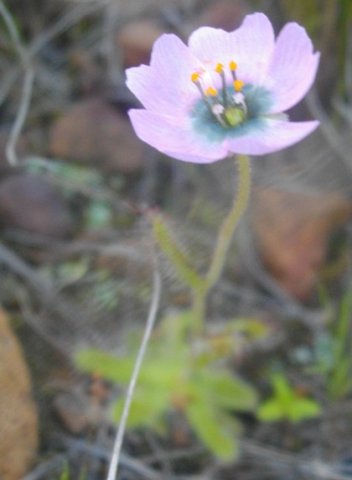Drosera cistiflora flower

Author: Ivan Lätti
Photographer: Thabo Maphisa
Drosera cistiflora bears white, creamy yellow, pink, mauve, purple or red flowers! The flowers have dark centres, from dark green to about black. Flower diameter is up to 4 cm. The five spreading and inclining petals form a shallow bowl, nothing to hide. The five orange anthers are often noticeable. The ovary has three placentas and there are three styles.
While Drosera flowers are pretty, towering above the leaves, they are comparatively conventional in shape and function, compared to the leaf functioning of these plants that catch food.
Drosera roots are poorly developed, serving to anchor lightly and receive moisture. Nutrients have to come from the plant's predatorial activities (Curtis-Scott, et al, 2020; Manning, 2009; KZN Rhino Club Newsletter, Oct 2010; iNaturalist).

